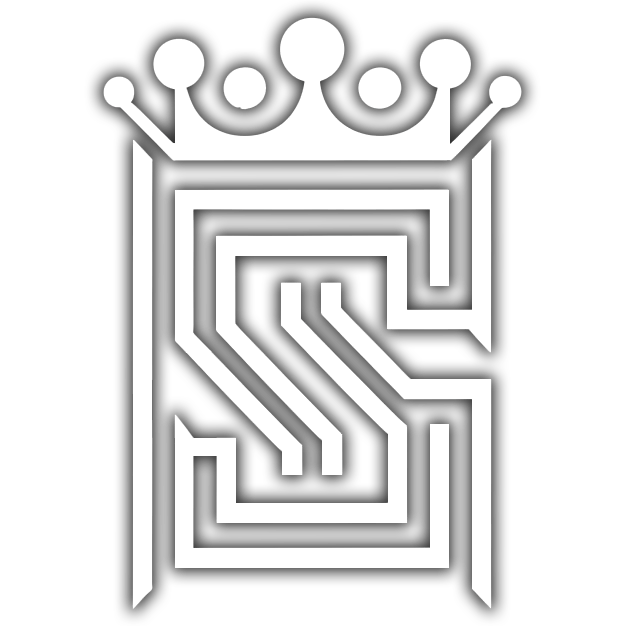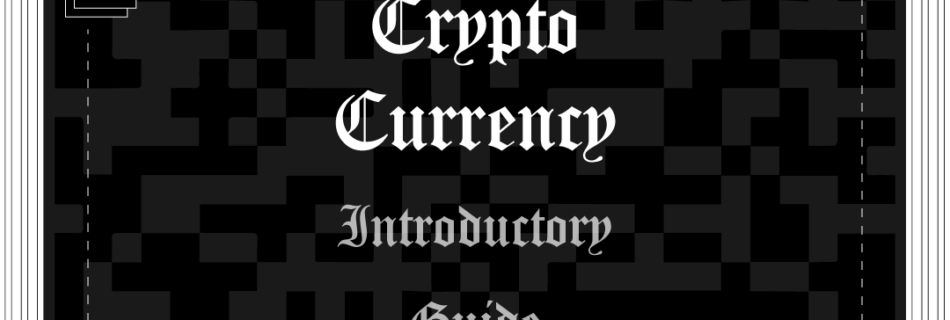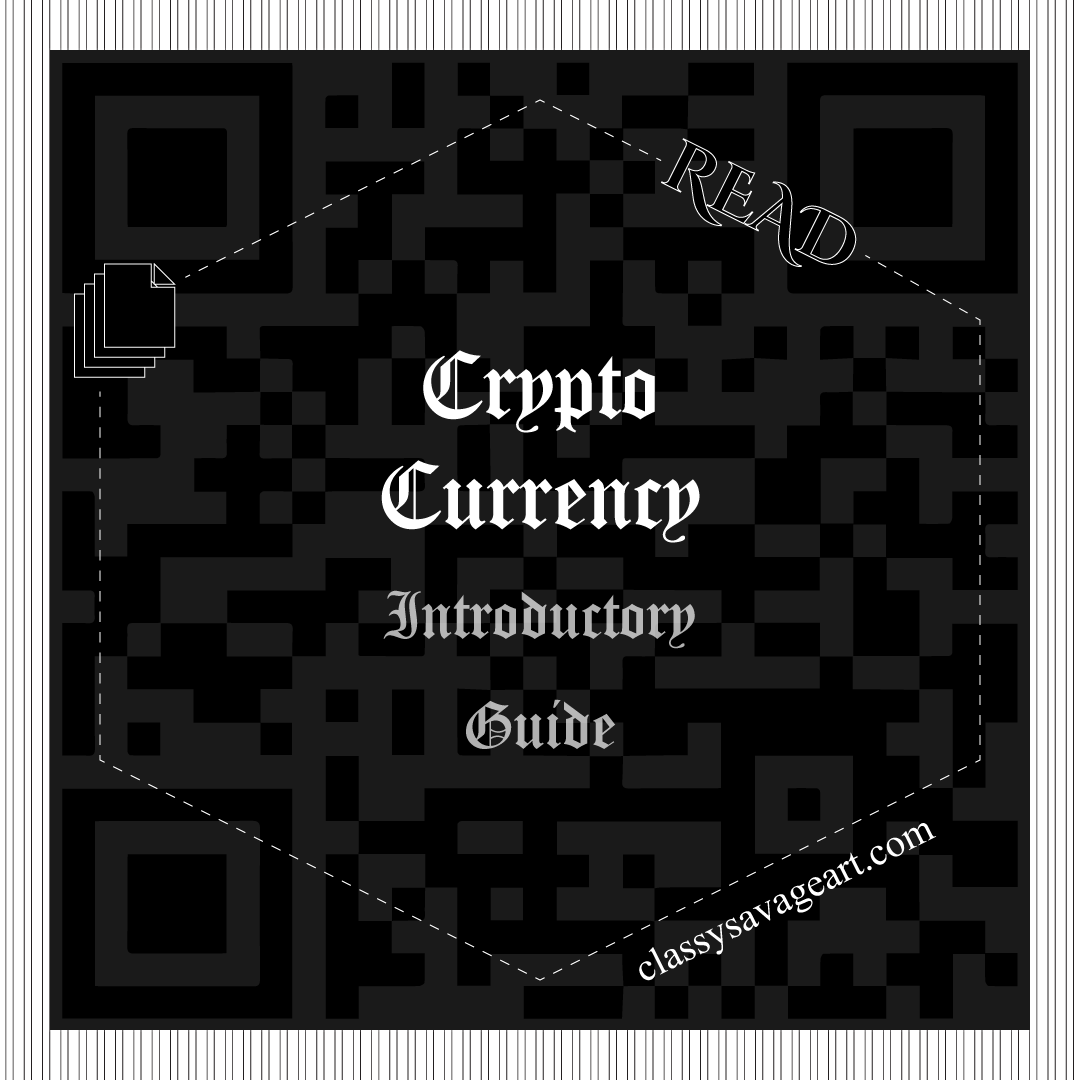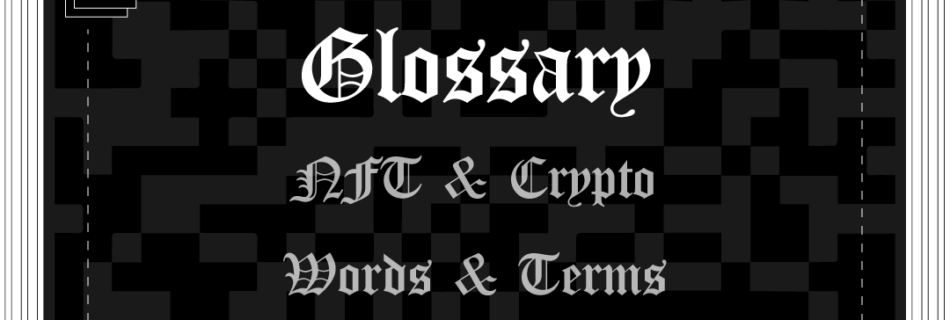Cryptocurrency: Introductory Guide
This document (in progress) begins with basic words, terms, and definitions, then proceeds to offer insight for beginners on how to select, download, setup and use their first crypto wallets; moreover, recommendations are based on personal experience and credentialed foundation of technology, art, media with decades of experience in business and law. The point of this guide is to help you support the Classy Savage mission; therefore, this information should be trusted to enable anyone to legally purchase Classy Savage NFTs.
Both cryptocurrency and NFTs are innovative digital assets that have gained popularity in recent years. Understanding the basics of these concepts is essential for anyone looking to explore the world of digital finance and unique digital collectibles.
Cryptocurrency is a digital or virtual form of currency that uses cryptography for security and operates on decentralized networks called blockchains.
-
- Blockchain: A blockchain is a distributed ledger technology that records all transactions across a network of computers. It ensures transparency, security, and immutability of data.
-
- Coins: Cryptocurrencies like Bitcoin, Ethereum, and Litecoin are often referred to as coins. Each coin operates on its blockchain and serves as a medium of exchange or store of value.
-
- Token: Tokens represent assets or utility on a blockchain. They can represent anything from digital art to real estate ownership.
-
- Buying and Selling Basics: Cryptocurrencies can be bought and sold on various online platforms called exchanges. Users can create accounts, deposit fiat currency (like USD) or other cryptocurrencies, and trade them for different cryptocurrencies.
-
- Marketplace: Cryptocurrency marketplaces are platforms where users can buy, sell, or exchange cryptocurrencies. Examples include Coinbase, Binance, and Kraken.
NFTs (Non-Fungible Tokens):
Unique digital assets stored on blockchains that certify ownership and authenticity of a specific item or piece of content.
-
- NFT: Non-Fungible Tokens are digital assets representing ownership or proof of authenticity of unique items such as digital art, collectibles, virtual real estate, and more.
-
- Minting: Minting refers to the process of creating a new NFT. Artists and creators mint their digital assets on NFT marketplaces by uploading them onto a blockchain, typically using smart contracts.
-
- Dropping: Dropping, also known as airdropping, is a method of distributing NFTs for free or as part of a promotional campaign. NFTs are sent directly to users' wallets without requiring payment.
-
- Buying & Selling Basics: NFTs can be bought and sold on specialized NFT marketplaces like OpenSea, Rarible, Nifty Gateway, Magic Eden, Blur, and NBA Top Shot. Users can browse collections, place bids, or purchase NFTs using cryptocurrencies.
-
- Ownership & Authenticity: Each NFT contains unique metadata that verifies its authenticity and ownership. The blockchain records the transaction history, ensuring transparency and preventing counterfeit items.
-
- Smart Contracts: Smart contracts are self-executing contracts with the terms of the agreement directly written into code. They enable automated transactions and provide security and transparency in NFT transactions.
Common Terms:
-
- Wallet: A digital wallet is a software program that stores public and private keys and interacts with various blockchains to enable users to send, receive, and manage their cryptocurrencies and NFTs.
-
- Gas Fees: Gas fees are transaction fees paid to miners on a blockchain network to process and validate transactions. They vary depending on network congestion and transaction complexity.
-
- Decentralized Finance (DeFi): DeFi refers to a category of financial services built on blockchain technology that aims to disrupt traditional finance by enabling peer-to-peer transactions, lending, borrowing, and trading without intermediaries.
-
- Market Volatility: Cryptocurrency and NFT markets are highly volatile, with prices subject to rapid fluctuations. Investors should be aware of the risks and consider their investment goals and risk tolerance.
By understanding these basic concepts, beginners can navigate the world of cryptocurrency and NFTs more confidently. However, it's essential to conduct further research and stay informed about developments in this rapidly evolving space.
Getting Started:
Treat this like placing a bet or investing with money you can afford to lose; most probably because you made an error by not following these key tips. One can see quick gains from rising cryptocurrencies or purchasing NFTs such as Classy Savage when relatively new and before value skyrockets. Spread out your tokens like chips in the casino.
Get some crypto and NFTs, or start with crypto and spend your gains on NFTs before the dip, or spend your cash on ETH to buy Classy Savage NFTs anytime. ROI for Classy Savage NFTs is guaranteed upon legal victory in case you have not read deep into the about section of this site, but the first thing you have to do is get coins and roll the dice.
Classy Savage Recommendation for Newbies:
- Download Commonly Trusted App: Coinbase
- Fund Account w/ $10 or More
- Buy Several Cryptocurrencies:
* $1 of ETH, $1 of BTC, $1 of SOL, $1 MATIC, $1 USD, $1 USDC. etc. - Get Familiar w/ Coinbase
* Use it to Monitor the Fluctuations of Your Assets (Coins) for a Week - Download Most Popular App: MetaMask or Phantom
* Do this while getting familiar w/ CB (or you can use either for everything) - Fund Account w/ Enough ETH to Buy an NFT
- Connect MetaMask to login @ opensea.io
- Buy an NFT
@ opensea.io/collection/classysavageart
@ opensea.io/collection/classysavage
@ opensea.io/russellrope - Sell that NFT
* For Huge Profit, & Ensure Classy Savage Gets Standard 10% Royalty - Congratulations you are ready! Let's make sum money!!!!
Download Free Wallet from App Store
-
- Coinbase - Currency Exchange & Banking
- Has Web3 Wallet Built-in
- Account Managed Like Bank Secured w/ Personal Info
- Comes w/ MasterCard Debit from Acct
- Coinbase Wallet = Separate App (Not Recommended)
* Better not to put all eggs in one baske
- Coinbase Wallet = Separate App (Not Recommended)
- Coinbase - Currency Exchange & Banking
-
- MetaMask - NFTs & Currency
- Reigns Supreme for NFT Collecting & Creation
- Most Universal Wallet for NFT Marketplaces
- First Option to Login not only to OpenSea
- Self-managed 12 word phrase recovery code; Keep it safe!!!!
- Most Universal Wallet for NFT Marketplaces
- Reigns Supreme for NFT Collecting & Creation
- MetaMask - NFTs & Currency
-
- Trust Wallet - Currency Exchange & Banking
- Trusthworthy thus far
- Self-managed 12 word phrase recovery code; Keep it safe!!!!
- Alternative, but not replacement for Coinbase & MetaMask
- Trust Wallet - Currency Exchange & Banking
Connecting dapps/wallet to market place is as easy as using social media such as Google to login into third party sites. You can add extra layers of protection for various actions by requiring pins and biometrics.  It is good to have two-factor authentication for financial technology.
Never connect to or scan stuff you do not know. There are sooooo many scammers trying to phish accounts of newbies, and the can come up with convincing rubbish. Ignore all of that, do not let anyone pressure you, always check both the address bar in your web browser and full email addresses. When in doubt, go directly to the site by typing it in your address bar. You can always connect with customer support.
Another key piece of advice is to be extremely patient when processing any type of transaction; leave the app open and let it sit (keep your screen from going idle and locking you out) for up to 10 minutes or longer to ensure you do not get charged twice, etc. It is usually quick, but impatience can cause human error. This stuff does not work at the same speeds of other apps such as banking apps, etc.
To be continued....




